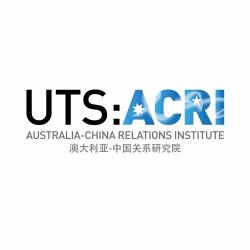Since early 2017, there have been disturbing reports of the arbitrary extrajudicial detention of ethnic and religious minorities in China’s Xinjiang province.
What does the evidence show about the function and scale of the facilities? How have Chinese state media portrayed the situation in Xinjiang? What should foreign governments, including Australia, do in response to what is happening there?
Fergus Ryan and Nathan Ruser from the International Cyber Policy Centre at the Australian Strategic Policy Institute (ASPI) join Simone van Nieuwenhuizen, Project and Research Officer at the Australia-China Relations Institute (ACRI) at the University of Technology Sydney to discuss their research for the ASPI report ‘Mapping Xinjiang’s re-education camps’.
Guests: Fergus Ryan, Analyst, International Cyber Policy Centre (ICPC), Australian Strategic Policy Institute (ASPI); Nathan Ruser, Researcher, ICPC, ASPI
Host: Simone van Nieuwenhuizen, Project and Research Officer, Australia-China Relations Institute, University of Technology Sydney
Since early 2017, there have been disturbing reports of the arbitrary extrajudicial detention of ethnic and religious minorities in China’s Xinjiang province. The Chinese government initially denied the existence of detention facilities of any kind. More recently, it has claimed the facilities in Xinjiang provide free ‘vocational training’ to improve the economic mobility of minorities, and that they function as a counter-terrorism measure to eradicate extremist beliefs and behaviour among the Muslim population.
What does the evidence show about the function and scale of these facilities? How have Chinese state media portrayed the situation in Xinjiang? What should foreign governments, including Australia, do in response to what is happening there?
Fergus Ryan and Nathan Ruser join Simone van Nieuwenhuizen to discuss their research for the ASPI report ‘Mapping Xinjiang’s re-education camps’. Evidence gathered from satellite images, tender documentation and state media reports demonstrate that the facilities have grown significantly over the last two years, and are being used for punitive rather than educational or vocational purposes.
While it is difficult to accurately quantify the growth of the detention centres, including facilities converted from other types of buildings such as schools, the 28 facilities examined for the ASPI report have witnessed a 465 percent increase in size since 2016, and the pace of growth appears to be increasing. Over 700,000 square metres of floor space were added to the facilities from July to September 2018 alone.
Satellite images reveal the securitised nature of the facilities, which are surrounded by barbed wire fences, and include watch towers and barricades. Exercise yards are fenced off, and are not furnished with recreational equipment. Since the ASPI report’s release, further research has shown that budgets for ‘social stability management’ have increased, while vocational training budgets have in fact decreased. Furthermore, the management of facilities in Xinjiang have purchased equipment typically used in prisons, such as mace and handcuffs. This evidence supports the argument that the internment facilities in Xinjiang are not intended for vocational educational or training.
While recent Chinese government propaganda efforts have had little effect on international opinion, some countries such as Mozambique and Zimbabwe have expressed an interest in emulating this as a counter-terrorism policy. Domestically, propaganda and censorship has unfortunately fuelled Islamophobia, by providing official endorsement of claims that a large proportion of the Uighur population are extremists or terrorists.
The Australian government has consistently expressed concern about the situation in Xinjiang. At the United Nations Universal Periodic Review of China’s human rights in November, Australia placed particular emphasis on violation of rights in Xinjiang. In the same month, Foreign Minister Marise Payne reportedly discussed the situation in Xinjiang with her counterpart Wang Yi in Beijing, and Australia signed an open letter with 14 other countries to request an audience with Chen Quanguo, the Xinjiang Party Secretary. While these are important steps, they are unlikely to be enough, due to the long-term nature of the facilities and the Chinese government’s Xinjiang policy. Recent discussions of an Australian version of the Magnitsky Act is another positive development, and may prove an effective way to target individuals responsible for human rights violations in Xinjiang and elsewhere.
Theme music by Sam J Mitchell.


